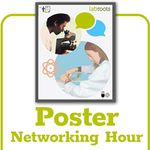Principal Scientist - Spatial Biology, Leica Microsystems
BIOGRAPHY
NOV 07, 2024 8:00 AM PST
Emerging methods to study an evolving landscape: Characterizing the tumor microenvironment with spatial biology
Speaker
Event Date & Time
Date: November 7, 2024
Time: 8:00 AM (PST), 11:00 AM (EST), 5:00 PM (CET)
Abstract
High resolution surveys of the tumor microenvironment (TME) are needed to obtain a holistic portrait of the genetic, epigenetic, and cellular factors contributing to cancer progression. To this end, the field has seen a rapid expansion of methods empowering granular characterization of tissues across a range of resolutions (x, y coordinates) and volumes (depth z), broadly termed spatial biology approaches. The technical capabilities of each method, sample format, experimental aims, and access to instrumentation and trained personnel often dictate the most suitable platform(s) for individual researchers to employ. When selecting a spatial biology methodology, there are several important study design considerations researchers evaluate including the study size, number of analytes to be investigated, resolution needed, and area of tissue to image. Furthermore, no single technology can adequately address tumor evolution between sites and over time. This webinar will highlight the value of integrating multiple single cell and spatial methods to construct multi-omic atlases of normal and malignant tissues with a specific focus on follicular lymphoma (FL). FL is a generally incurable malignancy that originates from developmentally blocked germinal center GC B cells residing, primarily, within lymph nodes. In FL, the malignant B cells “re-educate” the lymphoid environment by altering the phenotype, distribution, and abundance of other cells such as T cells, macrophages, and subsets of stromal cells. An overview of emerging methods in spatial biology, considerations for their adoption, and community resources for multiplexed imaging will also be discussed.
Learning Objectives
- Provide an overview of spatial biology methods and considerations for their adoption
- Explain the benefits and challenges of multi-omic studies with a particular focus on FL
- Discuss community resources for multiplexed imaging
Webinars will be available for unlimited on-demand viewing after live event.
You May Also Like
Loading Comments...


